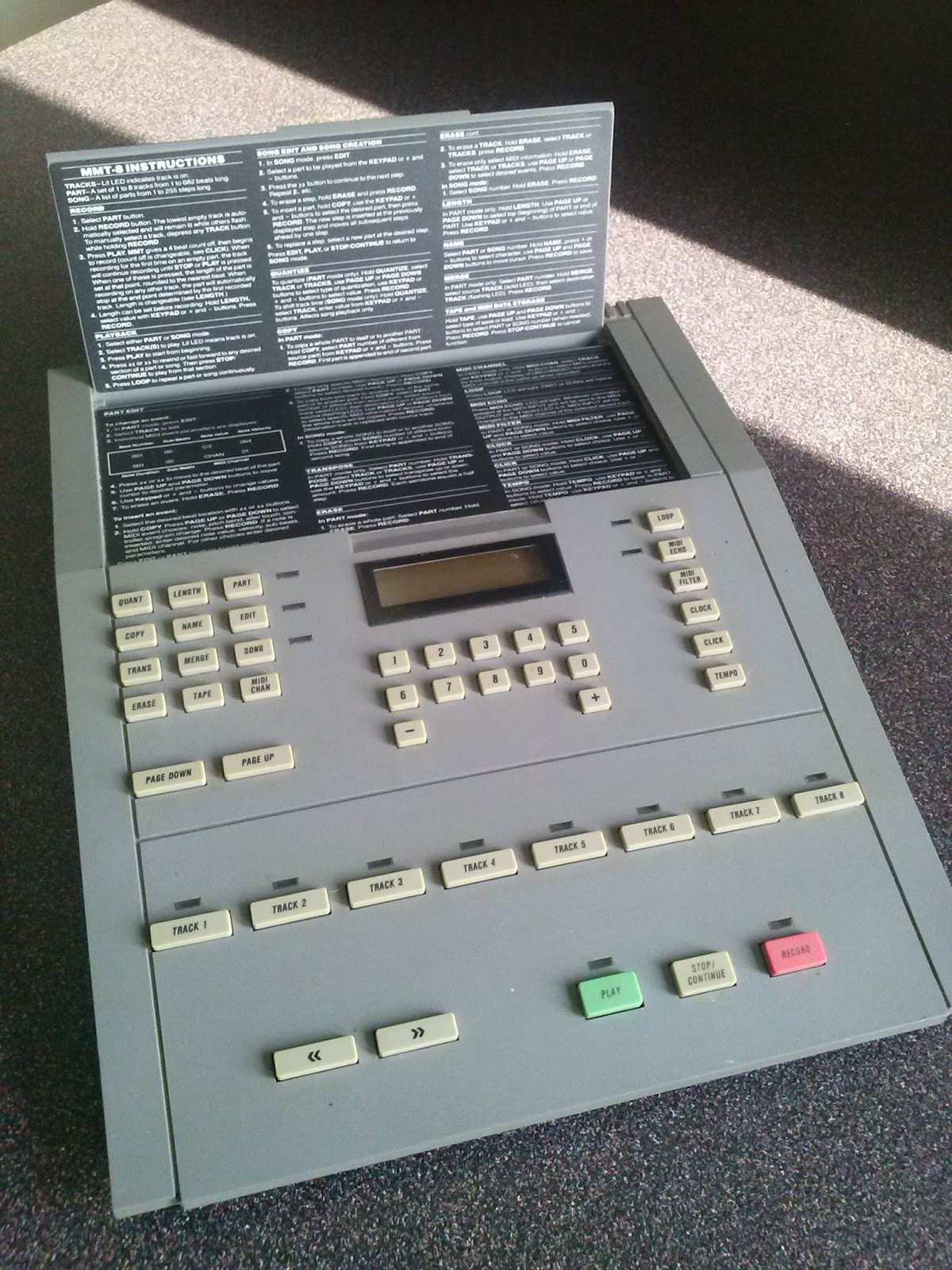 |
| Alesis MMT-8 Multi Track MIDI Recorder |
The Doepfer A-100 is not the only equipment in my studio.
Although I am not a collector, I do have some other quite interesting (classic) machines which I review in this section called 'The Rest'
This is the second installment, find part one (about my Waldorf Pulse
HERE)
The Alesis MMT-8 Multi Track MIDI Recorder was released at the end of 1987, together with its 'brother', the HR-16 Drummachine.
It is a very reliable sequencer with 100 pattern and 100 song memories and almost as reliable as my old trusty Atari ST computer, which has been the most stable sequencer I ever had... :-( ...may it rest in peace...
" The
MMT-8 is a simple MIDI sequencer that is still used today by some of the biggest names in electronic music (Orbital, Moby, Jimmy Edgar, Autechre and Carl Craig.) because of its simplicity, durability and reliability.
It's a pattern and song based sequencer with 8 separate tracks and each of the tracks can carry 16 channels of Midi info which makes this more like 128 tracks.
Tracks can be muted during playback giving you a lot of performance control for a live situation."
I bought this sequencer second-hand about 15 years ago for around 100 Dutch Guilders (45 Euro), and tried it in my setup for half a year or so, in cooperation with Cubase on my PC with a 4x4 M-Audio MIDI breakout box.
My whole workflow was different then, I tried to get the most of my set by using most MIDI-channels of every synth I had, so i ended up using Cubase more than i did use the MMT-8.
Now that my setup has changed into some kind of minimal live-jam-setup i am really considering integrating this fun little sequencer back in my setup again as a main sequencer.
At the moment my small setup is MIDI-synced via my
Roland R-8 drummachine, with my other synths/sequencers playing loops, but it's still pretty basic.
With an extra sequencer I will be able to put more (and longer) melody-lines in my music.
I haven't tried it yet in my current setup, but i think this will work...
My main concern is that the MMT-8 only has a single set of MIDI In/Out/Thru connectors, so i have to put all my machines in a chain-setup.
I just hope this doesn't cause too much lag in the synths that are last in the chain.
 |
Alesis MMT-8 with a quick
manual under the hood |
From my own experiences I already learned that the first in the chain to prevent an audible lag should be my Drummachines (R-8 and a Machinedrum), but after that i need to attach at least 5 more synths.
I hope this works out well... I might need to invest in a MIDI-splitter though.(mainly for synchronizing-reasons)
If it doesnt' work out the way I want might want to sell it.
A second-hand
MPC-1000 (or newer) is on my wishlist for a long time, but i still don't have the funds yet. #priorities
Multiple MIDI-Outputs are better, and the MPC's have multiple MIDI-Inputs too, which means I can also attach more of my keyboards (JV-90, Prophecy and BassStation).
The built-in sampler will mean that don't need my current
E-Mu ESI-32 sampler anymore and that i have to copy over all the samplebanks that i already built for that....
I hope to have my new setup configuration with the MMT-8 ready at the end of next month (depends on the weather too), and I'll let you know how it all turned out.
You will probably spot it in my next live-jam-videos...
First i still need to get my mixing-desk fixed. That's another thing that's gonna cost me a small fortune.
More soon...
 |
Aesis HR-16/MMT-8 book
by Craig Anderton |
I'm still looking for this
book by Craig Anderton about the MMT-8/HR-16(B)
It seems to be the only printed book relating to the MMT-8.
It is split into four (2x2) sections and the section relating to the MMT-8 doesn't give any more information about the MMT-8 or how to use it than the manual does.










.jpg)



